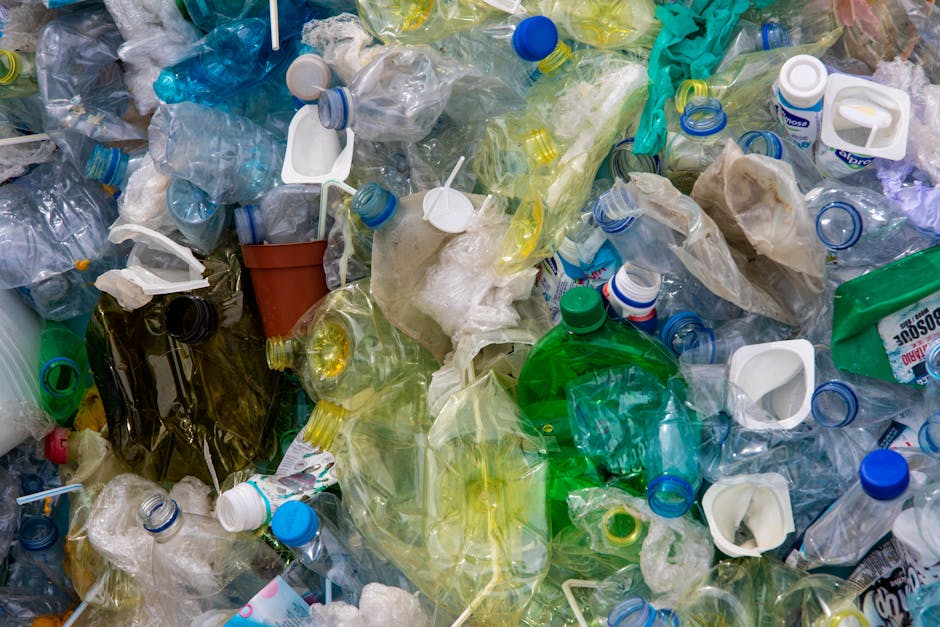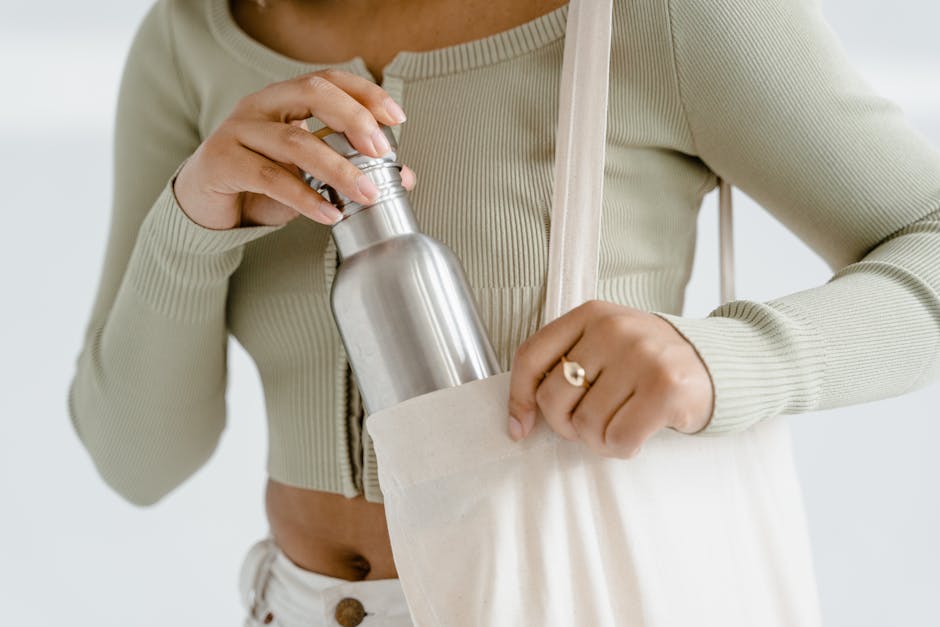Sustainable Fashion Trends 2025: Style with Purpose and Insight
As we step into 2025, sustainable fashion trends are no longer just a buzzword—they’re a movement reshaping wardrobes, industry standards, and the very definition of style. At Style QA, we believe in fashion that’s styled with purpose and answered with insight. This year, the focus is on making thoughtful choices that balance aesthetics with responsibility, proving that sustainability and style can walk hand-in-hand. Whether you’re a trendsetter, a conscious consumer, or simply curious about the future of fashion, this comprehensive guide explores the key sustainable fashion trends defining 2025—and how you can make them your own.
The Rise of Circular Fashion: Closing the Loop

Photo by KoolShooters on Pexels
One of the most transformative sustainable fashion trends in 2025 is the rise of circular fashion. Unlike the traditional linear model—where clothes are produced, worn, and discarded—circular fashion is about designing, producing, and consuming garments with their entire lifecycle in mind. This means creating clothing that can be reused, repaired, recycled, or even composted, rather than ending up in landfills.
Brands are increasingly embracing circular models by offering repair services, designing for durability, and launching take-back programs that encourage consumers to return old garments for recycling. Rental and resale platforms are booming, allowing fashion lovers to refresh their wardrobes without contributing to overproduction. Upcycling—transforming old or discarded materials into new, higher-value products—is also on the rise, with designers showcasing patchwork denim, reimagined vintage pieces, and accessories made from reclaimed materials.
For consumers, adopting circular fashion means thinking beyond the latest trends and investing in pieces that last. It’s about choosing quality over quantity, repairing instead of replacing, and giving new life to pre-loved items. As circularity becomes a cornerstone of sustainable fashion, it’s never been easier—or more stylish—to be part of the solution.
Eco-Friendly Materials: Embracing Nature and Innovation

Photo by RDNE Stock project on Pexels
Another defining feature of sustainable fashion trends in 2025 is the shift towards eco-friendly materials. Consumers and brands alike are moving away from resource-intensive, polluting fabrics and embracing alternatives that are kinder to the planet. Organic cotton, hemp, linen, and bamboo are gaining popularity for their minimal environmental impact, breathability, and comfort.
Regenerative agriculture—a farming method that restores soil health and captures carbon—is now a hot topic in the fashion world. Brands sourcing fibers from regenerative farms are not only reducing their environmental footprint but also supporting biodiversity and rural communities. Vegan and plant-based materials are on the rise, with innovations like mushroom leather and pineapple fiber offering stylish, cruelty-free alternatives to traditional animal-derived products.
Synthetic fabrics aren’t disappearing entirely, but there’s a growing emphasis on recycled options, such as polyester made from post-consumer plastic bottles. Transparency in sourcing is becoming a non-negotiable, with brands sharing detailed information about their materials and production processes. As consumers become more informed, choosing eco-friendly materials is a powerful way to align personal style with environmental values.
Ethical Production and Supply Chain Transparency

Photo by FRANK MERIÑO on Pexels
Sustainable fashion is about more than just materials—it’s also about how garments are made and who makes them. In 2025, ethical production and supply chain transparency are at the forefront of fashion trends. Brands are prioritizing fair labor conditions, living wages, and safe working environments for garment workers worldwide.
Technology is playing a key role in increasing transparency, with blockchain and digital tracking systems providing consumers with clear information about where and how their clothes are produced. Certifications and third-party audits are becoming standard, helping shoppers identify brands that truly walk the talk when it comes to ethics and sustainability.
For consumers, supporting ethical fashion means looking beyond labels and marketing slogans. It’s about asking questions, researching brands, and choosing to invest in companies that prioritize people as much as the planet. As the demand for transparency grows, so does the pressure on the industry to raise its standards and deliver on its promises.
Minimalism and Versatility: Quality Over Quantity

Photo by Paula Schmidt on Pexels
Minimalism is making a strong comeback in 2025, but with a sustainable twist. The focus is shifting from fast fashion’s endless cycle of trends to building a wardrobe of versatile, high-quality pieces that stand the test of time. Clean lines, neutral colors, and timeless silhouettes are replacing overly complicated designs and disposable garments.
This trend isn’t about sacrificing style—it’s about making smarter choices. Capsule wardrobes, which consist of a small number of carefully curated items that can be mixed and matched, are gaining popularity among those seeking simplicity and sustainability. Investing in well-made basics and statement pieces that never go out of style not only reduces waste but also makes getting dressed easier and more enjoyable.
For brands, the minimalism movement is an opportunity to focus on craftsmanship, durability, and thoughtful design. For consumers, it’s a chance to redefine personal style, prioritize what truly matters, and break free from the pressure to constantly buy new things.
Upcycling and DIY Customization: Creativity Meets Consciousness

Photo by Magda Ehlers on Pexels
Upcycling and DIY customization are more than just trends—they’re creative movements that empower individuals to express their style while minimizing waste. In 2025, upcycled fashion is everywhere, from runway collections to street style. Vintage denim remixes, patchwork jackets, and accessories made from fabric scraps are just a few examples of how designers and consumers are reimagining the potential of discarded materials.
DIY customization is also gaining traction, with more people personalizing their clothes through embroidery, patchwork, tie-dye, and other creative techniques. This hands-on approach not only extends the life of garments but also fosters a deeper connection to what we wear. Workshops, online tutorials, and community events are making it easier than ever to learn new skills and get inspired.
For those looking to embrace upcycling and DIY, the possibilities are endless. It’s about seeing value where others see waste, experimenting with new ideas, and celebrating individuality. As upcycled fashion becomes mainstream, it’s clear that creativity and consciousness can go hand in hand.
The Power of Conscious Consumerism

Photo by cottonbro studio on Pexels
Perhaps the most significant sustainable fashion trend in 2025 is the rise of conscious consumerism. Shoppers are increasingly aware of the impact their choices have on the environment, society, and the industry as a whole. This shift is driving demand for transparency, accountability, and innovation across the fashion landscape.
Conscious consumers are asking more questions, doing their research, and supporting brands that align with their values. They’re prioritizing quality over quantity, favoring local and independent designers, and embracing secondhand and rental options. Social media and online communities are amplifying these voices, creating a ripple effect that’s influencing brands and policymakers alike.
For the fashion industry, this means adapting to a new reality—one where sustainability is not just a trend, but a business imperative. For individuals, it’s an opportunity to make a difference with every purchase, proving that style can be both beautiful and meaningful.
How to Embrace Sustainable Fashion Trends in Your Wardrobe

Photo by Nugroho Wahyu on Pexels
Ready to make sustainable fashion trends part of your everyday style? Here are some practical tips to get started:
- Audit your wardrobe: Take stock of what you own, repair what you love, and donate or recycle what you no longer need.
- Invest in quality: Choose well-made pieces that will last for years, not just a season.
- Embrace secondhand: Thrift stores, consignment shops, and online resale platforms are treasure troves for unique finds.
- Support sustainable brands: Look for companies that prioritize eco-friendly materials, ethical production, and transparency.
- Get creative: Try upcycling or customizing your clothes to give them a new lease on life.
- Choose versatility: Build a capsule wardrobe with pieces that can be mixed and matched for different looks.
- Stay informed: Follow sustainable fashion news and communities to stay up to date on the latest trends and innovations.
By making small, intentional changes, you can be part of the movement shaping the future of fashion—one that’s styled with purpose and answered with insight.
The Future of Sustainable Fashion: What Lies Ahead

Photo by cottonbro studio on Pexels
Sustainable fashion trends in 2025 are just the beginning. As technology advances and consumer expectations evolve, the industry will continue to innovate in ways that prioritize people, planet, and profit. Expect to see even greater transparency, new materials, and collaborative efforts between brands, governments, and consumers to tackle the challenges ahead.
The journey toward a more sustainable fashion industry is ongoing, but the progress made so far is promising. By embracing circularity, eco-friendly materials, ethical production, minimalism, upcycling, and conscious consumerism, we can all play a role in creating a more stylish and sustainable future. At Style QA, we’re committed to keeping you informed and inspired—because fashion should always be styled with purpose and answered with insight.
Sources
- https://trellis.net/article/10-sustainable-fashion-trends-to-watch-in-2025/
- https://hayden-hill.com/blogs/journal/sustainable-fashion-trends-to-watch-in-2025
- https://ecoskills.academy/4-key-drivers-of-sustainable-fashion-in-2025/
- https://www.swagcycle.net/upcycled-fashion-trends-for-2024-whats-in-and-whats-out/
- https://ethikonline.com/blogs/featured-articles/sustainable-fashion-trends-2025

